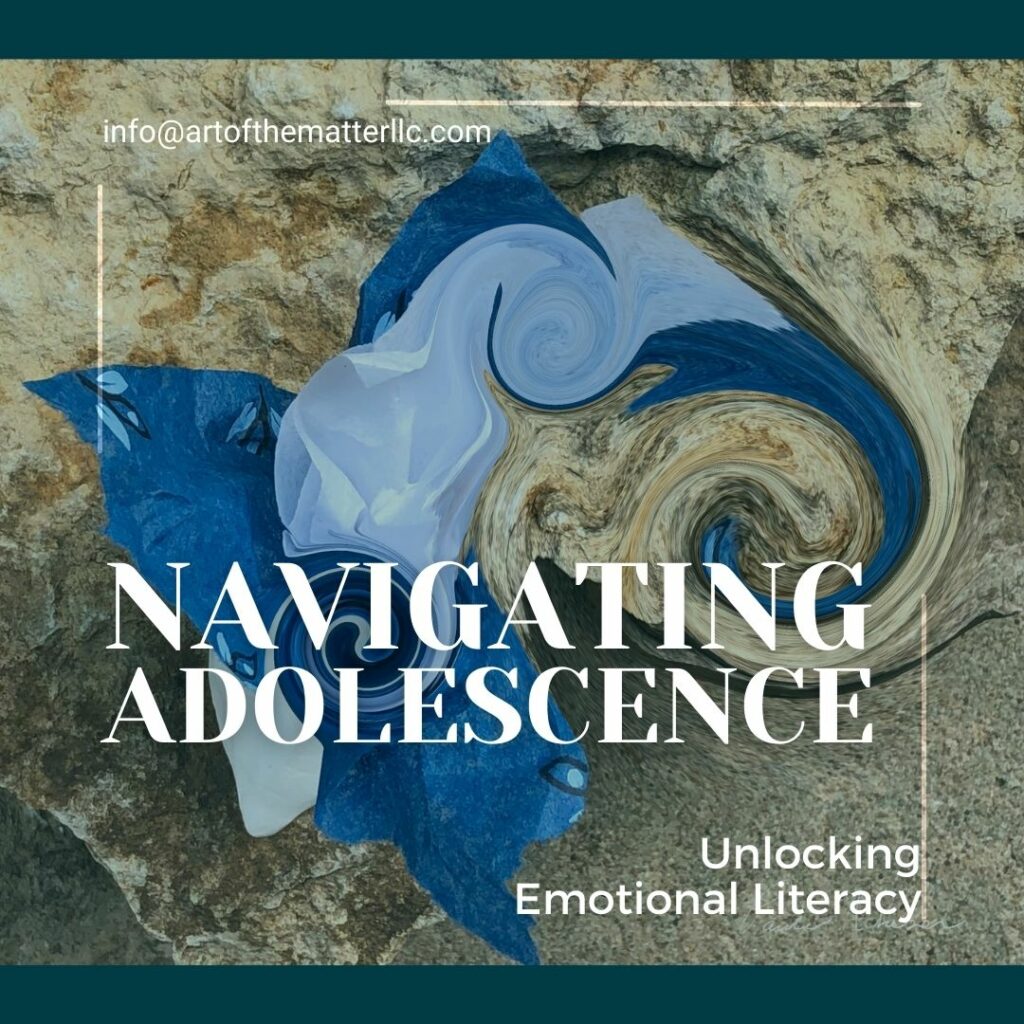
How many emotions can you name when you experience them? Brené Brown, author and researcher, found the average answer to this question was three. Yet, our experiences are much more intricate and nuanced. You’ve heard the phrase “Name it to tame it.” And yet, there is so much confusion about what is acceptable to show. Even our relationship with ourselves is obscured in floating images. Taking the time to put words, images, sounds, movement, and stories to our experiences is what defines not only who we are but also when, where, and why we are.
As a parent of an adolescent, it’s even more difficult to know what’s going on with them. Unless they tell someone who shares it with us, we may only see the façade that says, “I know it all.” Plus, we’re busy teaching them life skills, hoping they will be independent enough to manage on their own by the time they’re 25. Things like driver’s education and getting their first job may become the focus.
Emotional Literacy begins with knowing yourself.
Being able to say, “I feel irritated by a particular situation,” for example, reduces the temperature so the emotion doesn’t escalate into a full-blown explosion aimed at someone who has nothing to do with it. Dealing with difficult emotions such as grief and fear prepares us to also foster curiosity for calmness, compassion, and joyfulness.
When you think about your own adolescents, this may foster a connection with your teen or backfire with them telling you you don’t know what it’s like to be them. And perhaps this is true to a certain extent on an existential level. However, the universal nature of being human is that we are all playful, learning creatures with the capacity to witness ourselves.
Today, we have resources to foster self-esteem and a love for life.
Throughout history, the arts have seamlessly integrated technology into their practices, as demonstrated in Penn Jillette’s film, “Tim’s Vermeer.” If your teen is fortunate enough to possess an iPad, why not encourage them to explore Digital Art Therapy? The capacity to edit and revise serves as just one metaphor among many for personal development. As an adjunct to hands-on mediums and tactile approaches, it may be the least favorite tool.
And that’s the point: to provide choice as an antidote for having to do what everyone else is doing, a remedy for the compulsion to follow the crowd. Consider a music therapy method known as lyric analysis, where a quote from Rush resonates: “To choose not to decide, you still have made a choice.” Too often we operate on autopilot or default settings, which can be profoundly disempowering.
Art therapy, tailored to evaluate an individual’s sensory preferences and adaptable to harness the entirety of their creative capacity, is an engaging modality for many adolescents. Incorporating emotional literacy into art therapy further enriches the therapeutic process. By encouraging them to explore and articulate their emotions through creative expression, art therapy fosters a deeper understanding of their feelings and helps develop the skills necessary to navigate complex emotional landscapes.
Group therapy offers an opportunity for a teen’s identity to unfold before their eyes. The collection of art products over time (whether visual, poetry, or video of drama or dance) provides an objective continuation and an opportunity to leave behind old stories or wounds in favor of envisioned hopes and dreams. Attending a small group twice a month is an enjoyable way to explore who an emerging adult wants to become.
By integrating the arts into their lives and daily routines with a focus of supporting mental wellbeing, teens can pave the way for authentic self-expression.
Through this integration, they cultivate a toolkit for looking at things from different perspectives, fostering an appreciation for both the journey and the outcome. Perhaps, as the director of their own life script, they will set a positive tone to start each day even if it’s not the same playlist that you’re listening to (they’re not a mini-you after all). We aim to instill the importance of maintaining an internal locus of control—a powerful shield against deriving self-worth solely from external validation. To initiate the transformative journey for your teen, please reach out at 913-732-0671 or email info@artofthematterllc.com for their intake assessment today!
– Paula Acheson, MS, ATR-BC
Board-Certified Art Therapist
Paula received her BFA from KU and her master’s degree from Eastern Virginia Medical School. She is also the artist/owner of Multimedia Art Studios in addition to her work with Art of the Matter. She’s provided Art Therapy to adolescents in multiple group home settings, schools, and partial hospital programs.

